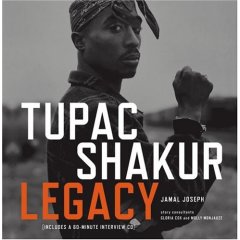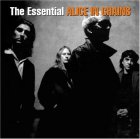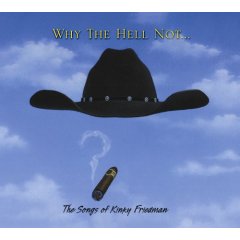
Written by Fumo Verde
A few months ago, I thought I put in for a request to see a DVD on Tupac Shakur. I received the conformation from the contact that "the book will be sent to you as soon as the publisher gets it out." Huh?! I wouldn't mind spending 60 or 70 minutes watching a documentary about Tupac, but to read another book, whoa. Babies, I'm reading three books now, but I had already accepted the assignment to do the review. Then, a very large package arrived. I recognized the area of origin, and thought "Shit, is this that Tupac book or frackin' War and Peace?"
Katz and Kittenz, let me tell you, when I opened this package up, well the phrase "blown away" is an understatement. To start off, I really can't say I am a Tupac fan. I don't have any of his music, but I know his voice when I hear it coming through the speakers. I always liked what I heard, but just never got into him and I don't really know why.
Sliding the hardbound book out of the case, the first thing you see is a full cover of Tupac dressed in white on a soft-colored background made my mind race. "Wow, this is going to be sweet!" and babies, it is. This book isn't just another bio about the untimely death of an American icon, but a pictorial history of a man, who, through all his triumphs and tragedies never forgot where he came from or what the words “respect” and “family” mean. There are over 60 pages filled with pictures of Tupac, his family and friends, and copies of poems, song lyrics and other ideas that filled the mind of such an interesting young man.
There are photos of Tupac at school, in the streets with his buddies, hanging out with his mom, and working in the studios. There's even one with him and Janet Jackson on the set of Poetic Justice. But that isn't all, kiddies. There are pullouts reminiscent of Nick Bantock’s Griffin & Sabine trilogy. Let me explain, throughout the book, there are pages inside of the pages. Some are slid into a slit cut into the page itself, which can be easily pulled out, such as Tupac's letter to Interscope Records naming Suge Knight as his manager and David Kenner as his lawyer. Other pullouts are paper envelopes that contain items such as Tupac's inmate I.D. card from New York’s Clinton Correctional Facility. Although they are obviously not the authentic items, both have been recreated to look and feel like the real deal.
This book is full of surprises on every page. Like, I didn't know that his mom was Afeni Shakur, the Black Panther Activist. She gives a foreword and if you do get this book, please read what this amazing woman has to say concerning her son and his life, and one can see where Tupac gained his incredible knowledge and insight about the world.
Author Jamal Joseph also has a note on the foreword page. He explains how he is related to Tupac and how he watched him grow up. The story he relates to the reader throughout the book is about his close friend and how he watched this young boy turn into such a great and talented man. Joseph ends his author's note with, "It is what I miss the most. Those eyes that could see the past, present and future at the same time, and that smile that could re-arrange time and space into endless possibilities."
With a beginning that ends like that, get ready to not only read the story of Tupac Shakur, but to see it in images that the mainstream media couldn't even touch. He was not only a talented rapper, but also a political activist, entrepreneur, artist, chef and so much more. Tupac once said, "I'm not saying I'm going to change the world. But I guarantee that I will spark the brain that will change the world," and if he hasn't yet, this book just might be the spark that starts that flame.
This is a great book, and one hell of a collector’s item. For those of you how are fans, you will be overjoyed by what this book contains. For anyone who likes the history of music and the people who make it, put this book out on the coffee table. It needs to be in place where it can be appreciated, like the man who it’s about. Better than any Behind The Music episode could explain and with no commercials, Tupac Shakur Legacy brings to light the soul of an artist, a friend, and a man.
This is Fumo Verde, keeping it real.
P.S. I was going to let this be a surprise, but it’s hard to keep this mouth shut. Behind the front cover, taped inside, is a DVD, with over 60 minutes of interviews with Tupac and more.












